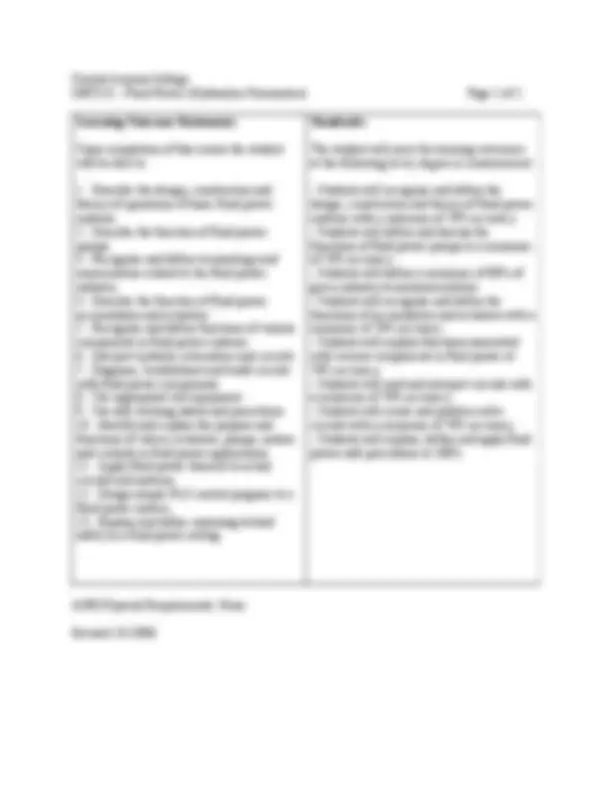



Study with the several resources on Docsity

Earn points by helping other students or get them with a premium plan


Prepare for your exams
Study with the several resources on Docsity

Earn points to download
Earn points by helping other students or get them with a premium plan
Community
Ask the community for help and clear up your study doubts
Discover the best universities in your country according to Docsity users
Free resources
Download our free guides on studying techniques, anxiety management strategies, and thesis advice from Docsity tutors
The details of a fluid power course offered by central arizona college, including course title, semester hours, learning outcomes, and required competencies. The course covers the theory, production, consumption, control, and application of hydraulic and pneumatic components, with hands-on laboratory activities.
Typology: Lab Reports
1 / 2

This page cannot be seen from the preview
Don't miss anything!


Central Arizona College 8470 N. Overfield Road Coolidge, AZ 85228 Phone: (520) 494-5206 Fax: (520) 494-
Prefix/Number: MET 132
Course Title: Fluid Power (Hydraulics-Pneumatics)
Course Description :
Theory, production, consumption, control and application of the transmission of energy through hydraulic and pneumatic components, including valves, actuators, pumps and circuits with application laboratory activities.
Semester Hours : 3 Times for Credit: 1
Lecture/Lab Ratio : 2 lectures, 3 labs
Pre-requisites: None
Co-requisites: None
Cross Listed: None
Grading Options: A/F
Approved Modalities: F2F
Central Arizona College MET132 - Fluid Power (Hydraulics-Pneumatics) Page 2 of 2
Learning Outcome Statements:
Upon completion of this course the student will be able to:
Standards:
The student will meet the learning outcomes at the following level, degree or measurement:
AGEC/Special Requirements: None
Revised: 01/